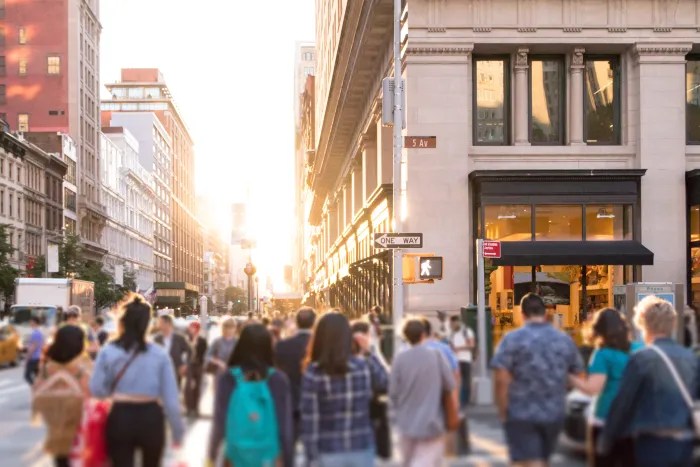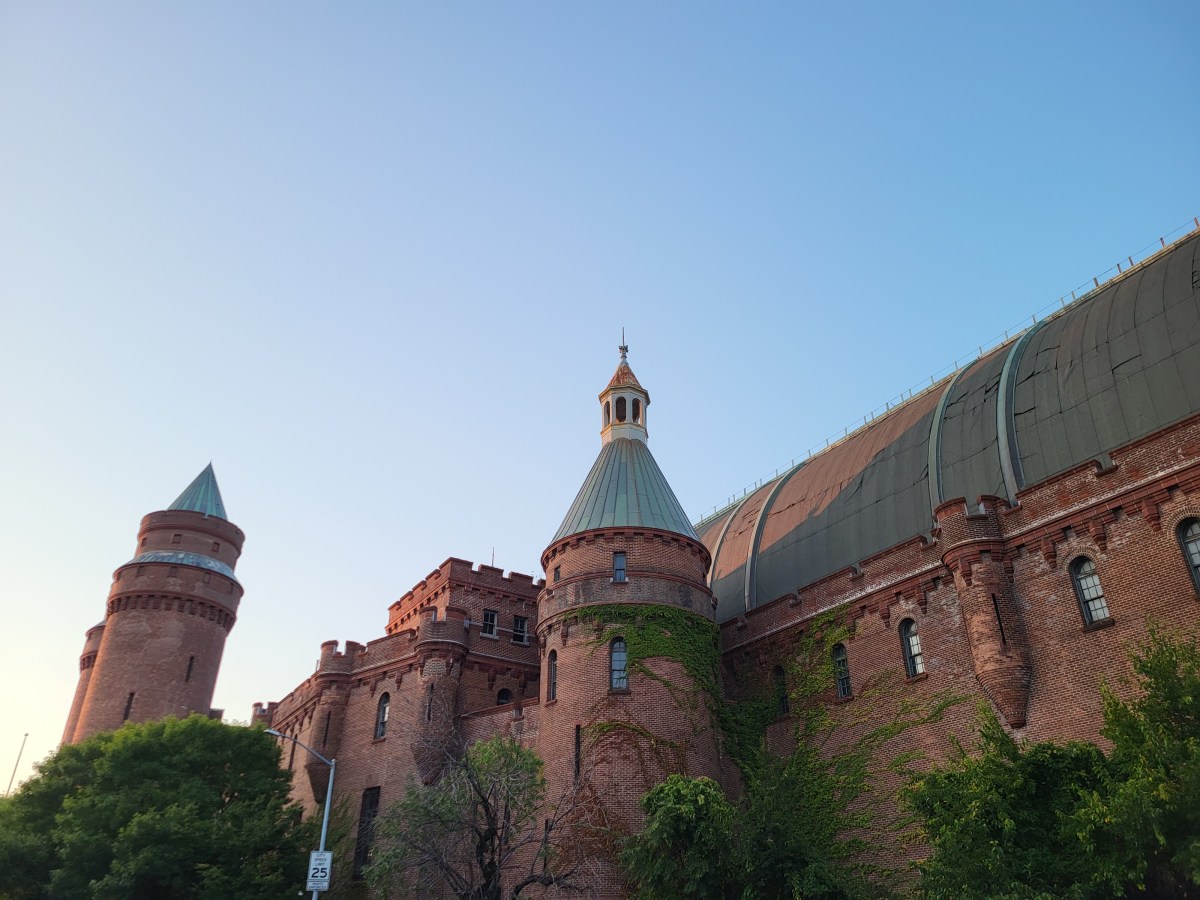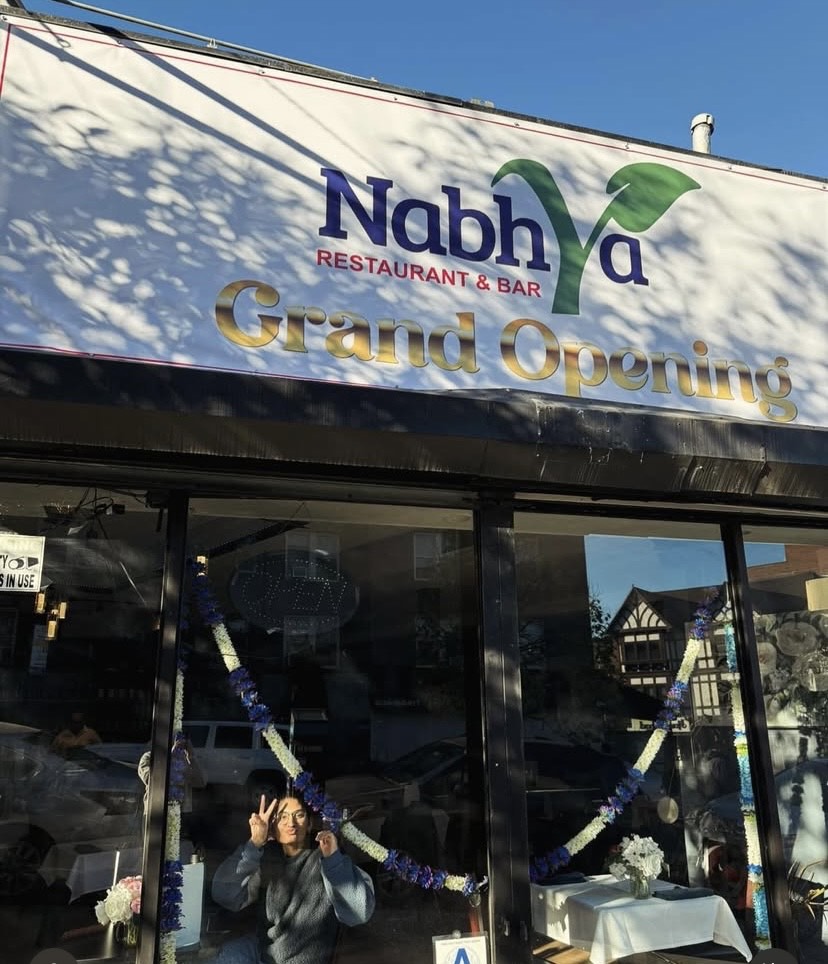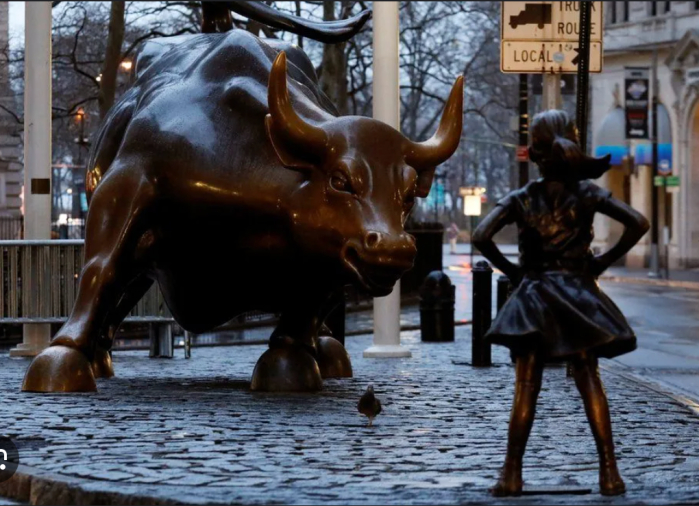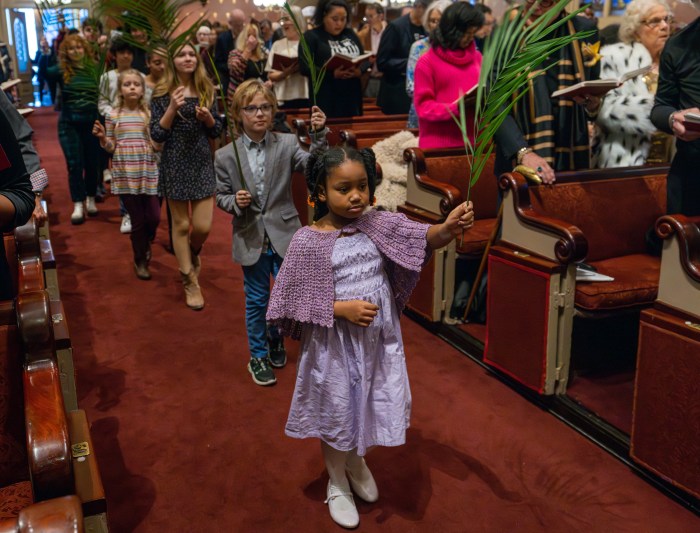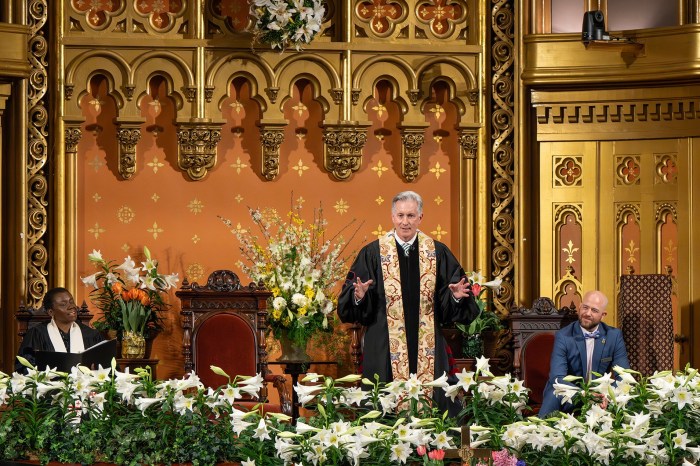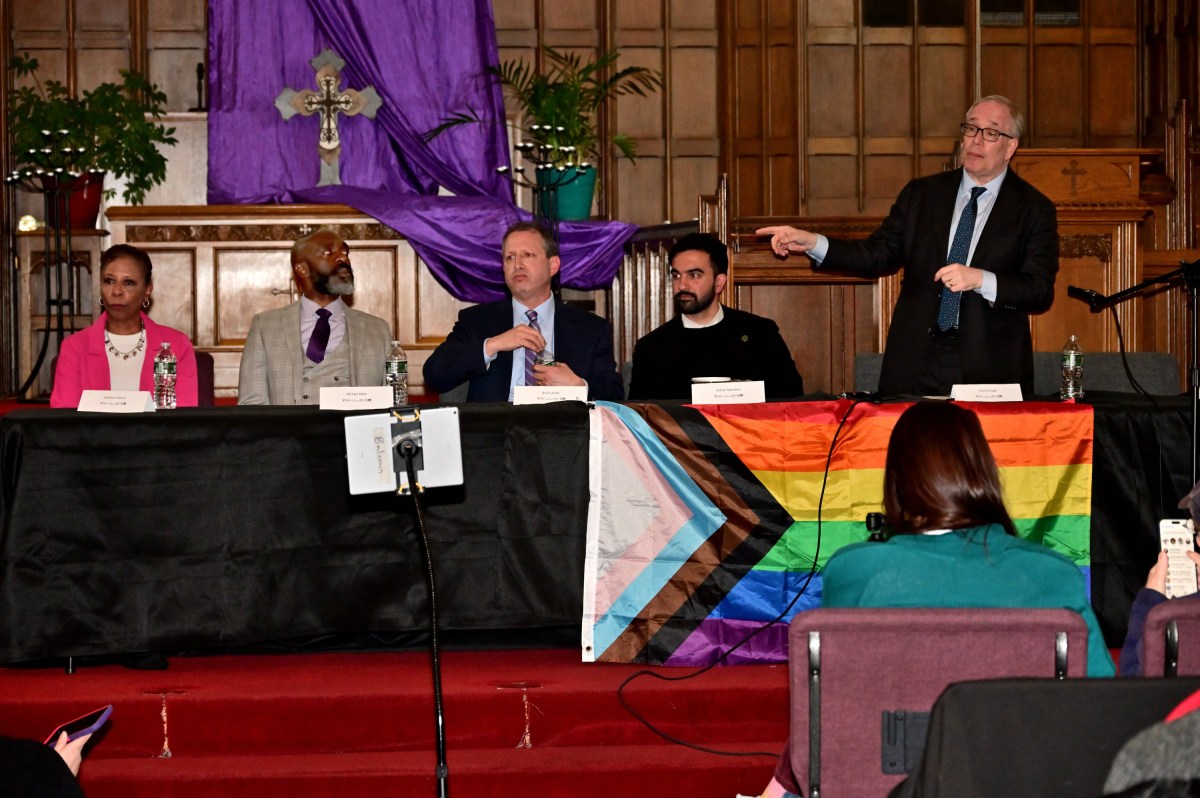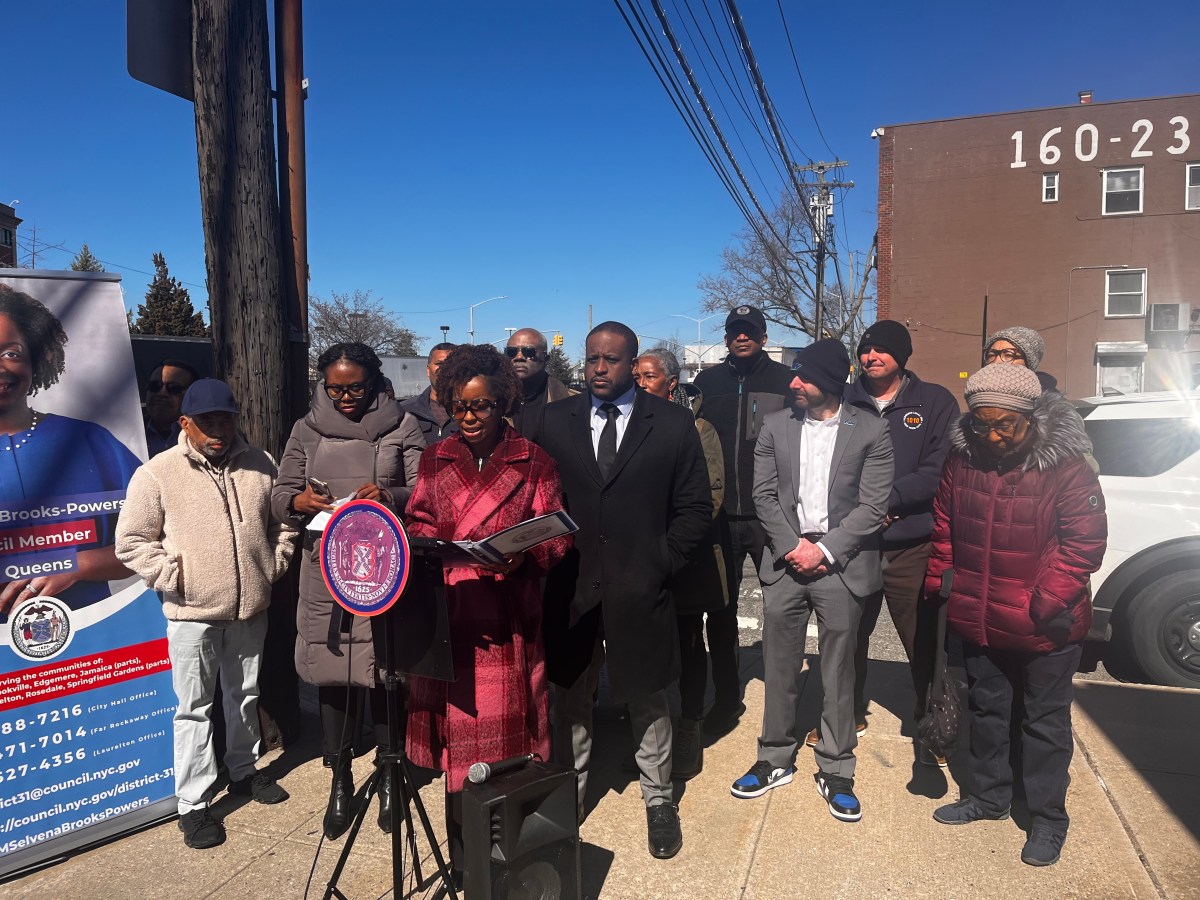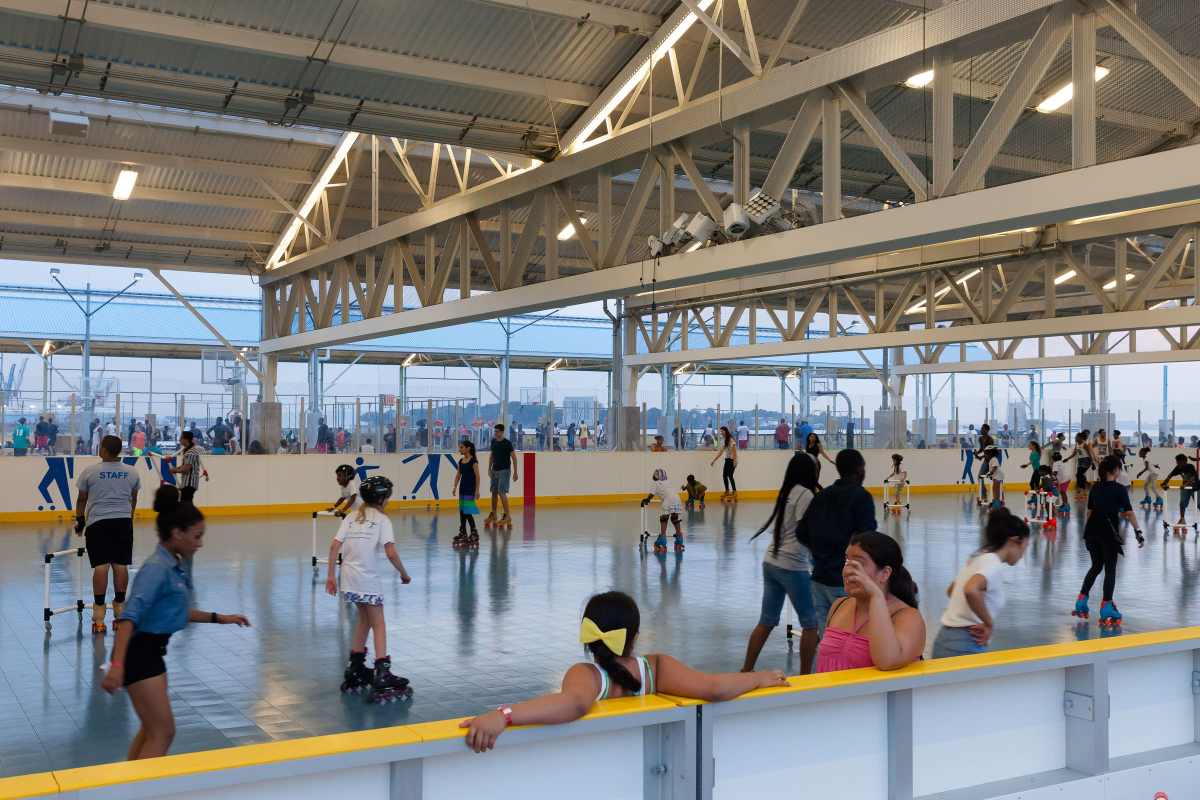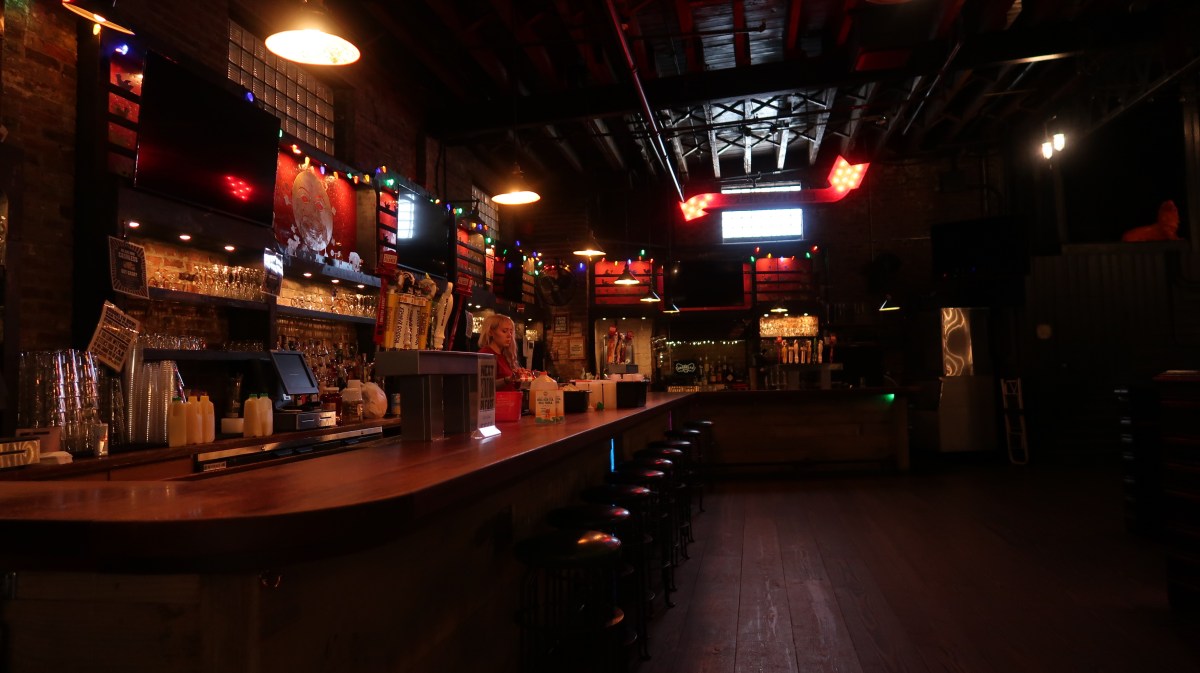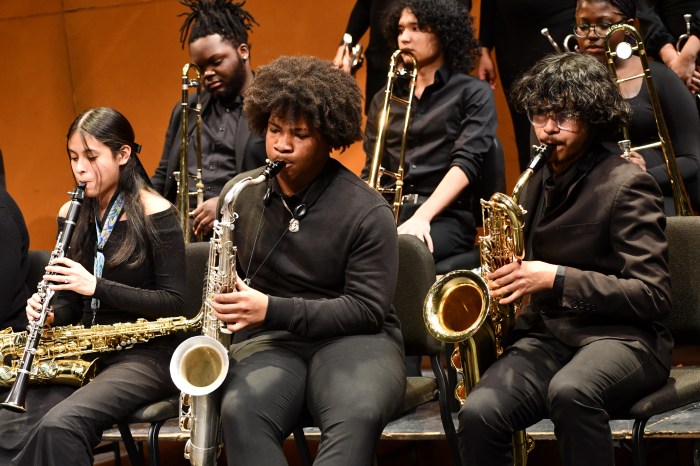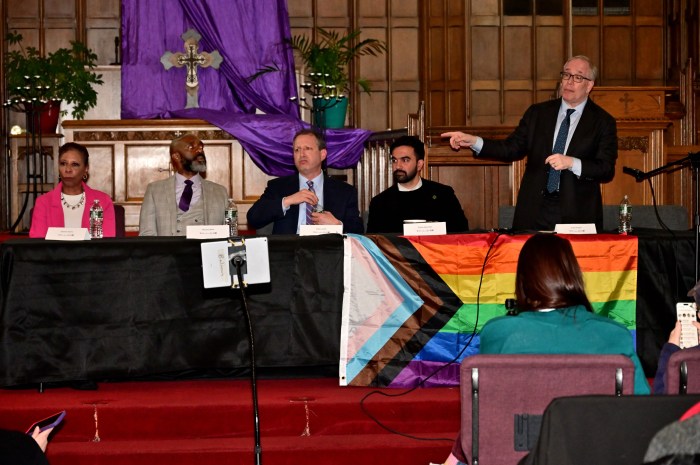The city is moving forward with plans to boost the economy and create sustainable jobs and businesses in the East New York Industrial Business Zone and Broadway Junction areas of Brooklyn.
New York City is looking to attract green businesses and local industry to two large city-owned sites in the IBZ nearly a decade after East New York’s rezoning. At the same time, plans are moving forward to revamp Broadway Junction, bringing long-awaited public space and infrastructure improvements to one of Brooklyn’s busiest but most neglected transit hubs.
The New York City Economic Development Corporation released earlier this month requests for proposals for two sites: a 1920s four-story former school building on Williams Avenue in East New York, currently operating as a shelter, and a large vacant lot on Sackman Street in Brownsville, both in the IBZ. The agency is calling for proposals from businesses that prioritize job creation, green industry development, and community benefits as part of efforts to make East New York a leader for emerging green industries.
The site at 173-191 Sackman St. is a 19,000-square-foot paved lot, while the 69,000-square-foot parcel at 116 Williams Ave. includes the former school. The building isn’t landmarked and could be razed or repurposed. The RFPs say both sites benefit from relatively affordable real estate, transit access, business support programs, and potential tax incentives.

The Sackman Street site currently serves as a short-term construction staging area and is surrounded by industrial activities, including self-storage, a bus depot, and metal fabrication businesses, the RFP says. The required deposit for the site is the greater of $300,000 or 10 percent of the purchase price.
The Williams Avenue site has been operating as a Department of Homeless Services women’s shelter and HVAC mechanical shop. The shelter and shop will both be relocated this year, and the building will be delivered vacant to whoever takes over the site, the RFP says. The deposit for the site is $500,000 or 10 percent of the purchase price, whichever is more.
Adjacent to the Williams Avenue site, on the corner of Glenmore Avenue and Hinsdale Street, is the TLC Sculpture Garden, a long-standing community green space managed by the GreenThumb program. Businesses interested in the Williams Avenue site must enhance and integrate the garden in their plans, according to the RFP. Given the garden isn’t mapped as a park, businesses can use the site’s development rights to preserve the garden or relocate it somewhere on the same block.
“Proposals to relocate the garden must include a compelling rationale as well as substantive improvements to a relocated garden of equal or greater area to the original,” the RFP says.

The RFPs prioritize industrial or job-intensive uses and say proposals must align with the city’s Green Economy Action Plan and provide tangible benefits to the surrounding community. Projects must also be financially viable without requiring ongoing city subsidies, and EDC is encouraging partnerships with community organizations and local developers.
NYCEDC President and CEO Andrew Kimball told Brownstoner East New York residents “deserve good jobs, safe and vibrant public spaces, and access to opportunities to thrive.” The city expects its $110 million million investment and $400 million from the MTA in the Broadway Junction area will have an economic impact of about $11.6 billion. Those investments into the local economy will help create “the thriving neighborhood and community that this community has long deserved,” said Kimball.
“In the two years since we first announced our planned transformation of Broadway Junction, our team has walked the streets and train station, spoken to business owners, residents, and local leaders, and fostered a vision that we believe responds to the immediate needs and the long-term dreams of the East New York community,” he said.
Fears of displacement
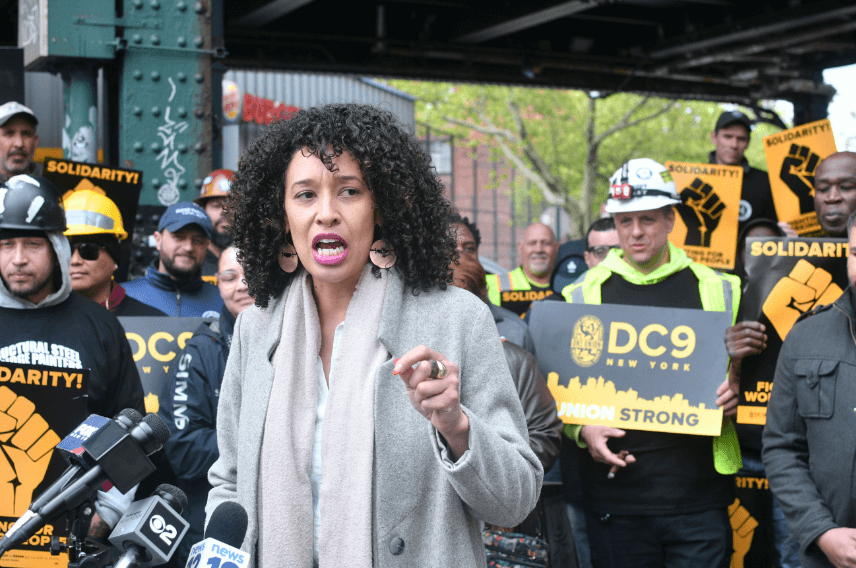
The planned investments come as East New York residents grapple with concerns about displacement and affordability. The neighborhood, which was rezoned in 2016 as part of the de Blasio administration’s housing plan, has seen limited followthrough on promised investments, Council Member Sandy Nurse told Brownstoner.
Nurse said the current RFP is the result of community-led planning efforts that have been in the works for years and continued advocacy for sustainable industrial and workforce development. “It’s really important that people understand this was a community-envisioned process, a grassroots coalition that has been really shaping it,” Nurse said. “A coalition that felt the city really broke promises to it during the East New York rezoning.”
Nurse said throughout the process, residents have emphasized the need for businesses that provide long-term careers rather than temporary or low-wage jobs. They want to see the IBZ positioned as a leader in green business. Among the industries that locals hope to see on the sites are renewable energy, sustainable construction, and locally manufactured environmentally friendly products.
“We really want to put the East New York IBZ on the map as a destination for the green economy that is growing in New York City; we want to position East New York residents as the forefront of that,” she said, adding she hoped businesses looking to set up shop would work with the community and follow through on what locals are asking for.
While the industrial investment is welcomed, Nurse acknowledged concerns about affordability and displacement, particularly as private development stemming from the East New York rezoning accelerates in the area.
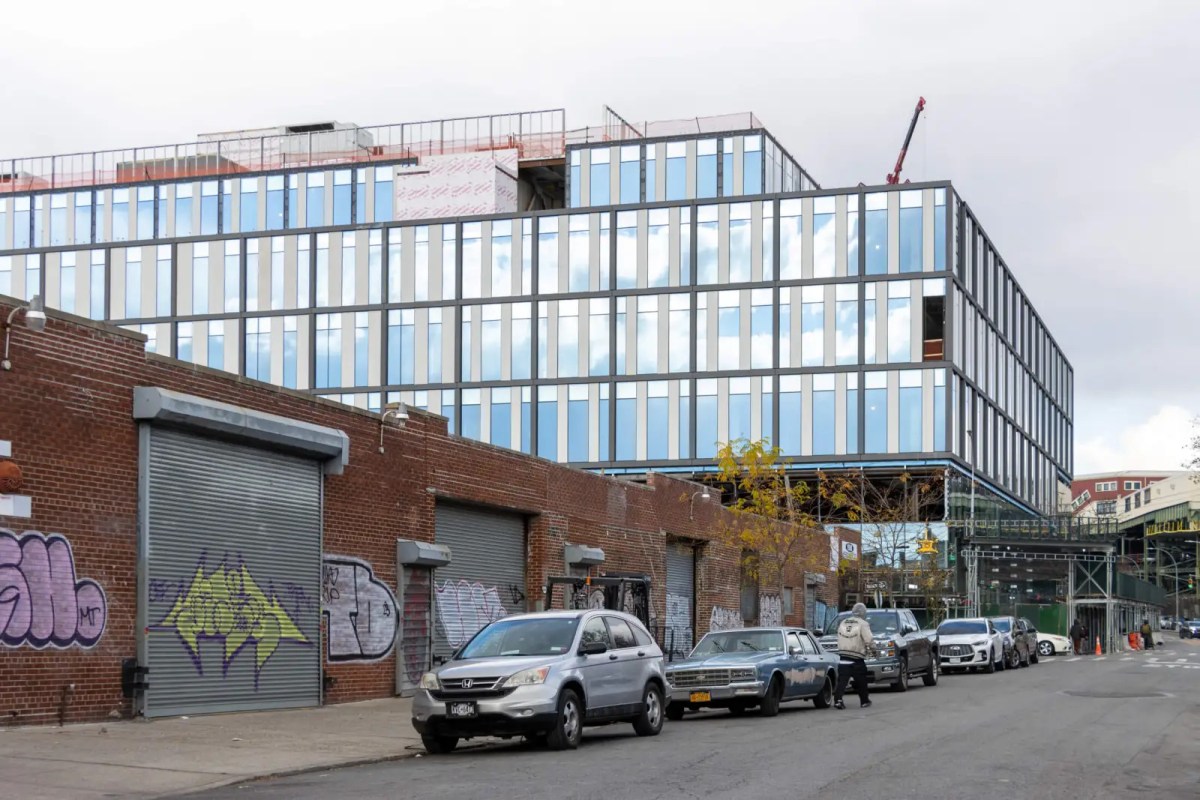
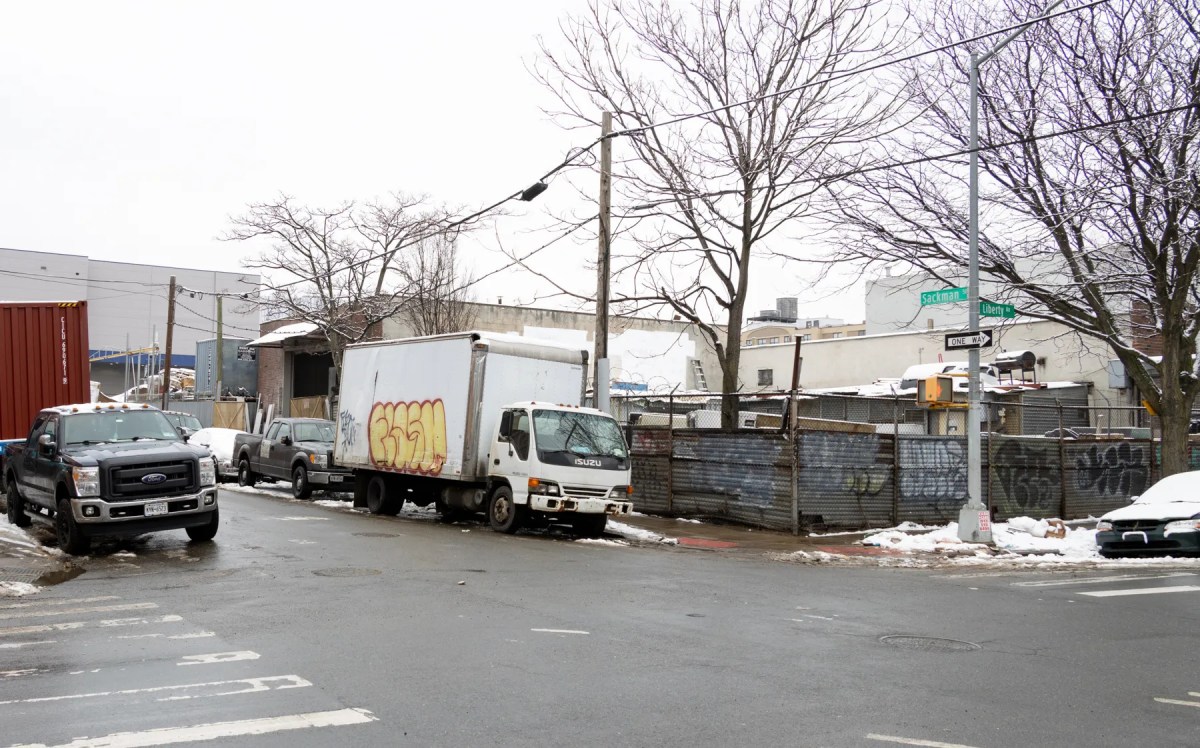
One major project in the neighborhood is Leser Group’s nearly finished six-story glassy building at 2440 Fulton St., on the corner of Herkimer, in Ocean Hill. According to city records, Abraham Leser purchased the site in 2015 for $33 million.
In 2022, Mayor Eric Adams announced the city would lease more than 200,000 square feet in the Marvel Architects-designed development to house more than 1,100 employees from the Human Resources Administration in the city’s Department of Social Services. The remaining 80,000 square feet will have private commercial space and retail tenants.
For residential development, a spot rezoning application filed in 2023 for a site near Broadway Junction proposes the construction of four high-rise towers, ranging from 21 to 29 stories.
“There’s a lot of infrastructure that we’re calling for to accommodate the growth in our community and the pressures that are coming through speculation around this private ULURP; we want to make sure that people have the right and opportunity to stay if they choose to, and that East New York is not displaced,” Nurse said.
“We have had such a loss of Black residents, and the city should not simply invest in our infrastructure, invest in our services, because a pretty project is coming to the district. It should have already been doing this.”
She said she wants to make sure the city keeps its promises to East New York, adding that any private developer who wants to be part of the neighborhood will have to adhere to those commitments as well as make their own and “be at the table with the community until we get to a place where we feel good about what it looks like.”
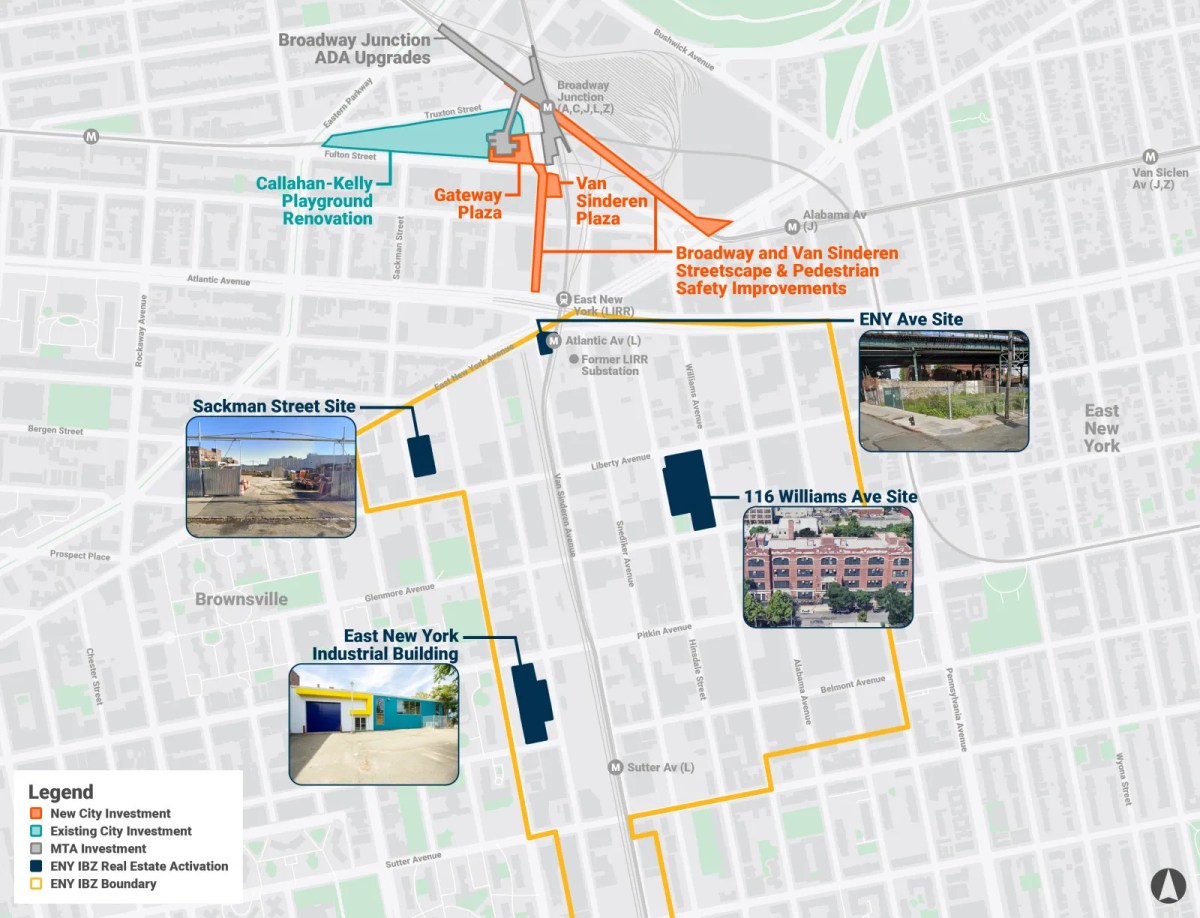
Nurse urges locals to stay engaged in the planning process for the RFPs and other pending projects. She says her office has been conducting workshops, door-knocking campaigns, and virtual meetings to ensure that community voices are heard. She says now is the time for locals to “get involved and come to the table and get the information so they can make decisions about how they feel about it.”
“We’re going to do everything we can to fight for their right to stay and the affordability of this community.”
In addition to the RFPs for the Sackman Street and Williams Avenue sites, the city has also released RFPs for public space and streetscape improvements at the Broadway Junction transit hub. A $110 million city investment, alongside a $25 million federal grant, will fund streetscape enhancements and a new public plaza at the station entrance.
The upgrades, which could include repaved sidewalks, new lighting, street trees, and safer intersections, are aimed at improving pedestrian safety and accessibility in an area that serves 100,000 daily commuters. The relocation of the NYPD Transit Bureau District 33 station will create additional space for public amenities. Design teams are expected to be selected by summer 2025, and construction to start in 2028.
‘Should have been done yesterday’
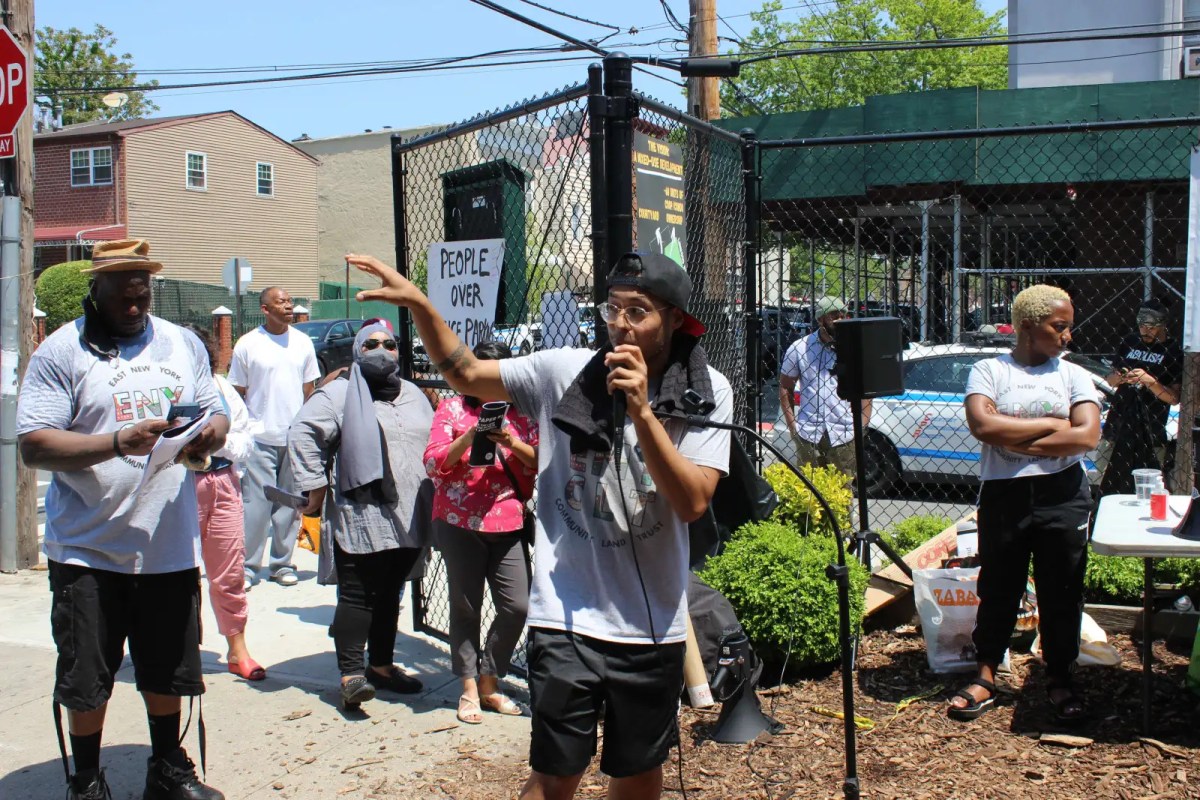
East New York Community Land Trust President Boris Santos told Brownstoner that investments in accessibility, streetscape, and safety improvements at Broadway Junction, along with progress on the IBX, “should have been done yesterday.”
“We deserve this, we deserved this a long time ago,” he said. But the projects also come hand in hand with the city’s responsibility to protect local residents, both homeowners and renters, he said. “With all of these real estate changes and/or investments and/or opportunities, you have the potential to increase…property taxes, and the values of everything, astronomically, so much so that it’s hard to predict because there are so many factors.”
The main goal of the land trust is to sustain the community, being “the one Black and brown safe haven in all of Brooklyn, East New York, Ocean Hill, Brownsville, in order to keep it that way and make sure we don’t have another Williamsburg,” he said. Growing up in Williamsburg and seeing the displacement post-rezoning was what drove him to do the work he does, he added.
He said the city needs to help cash-strapped, working-class owners of one- and two-family homes fund repairs. The city could also support the land trust, which could take properties off the speculative market and offer affordable 99-year ground leases to local residents.
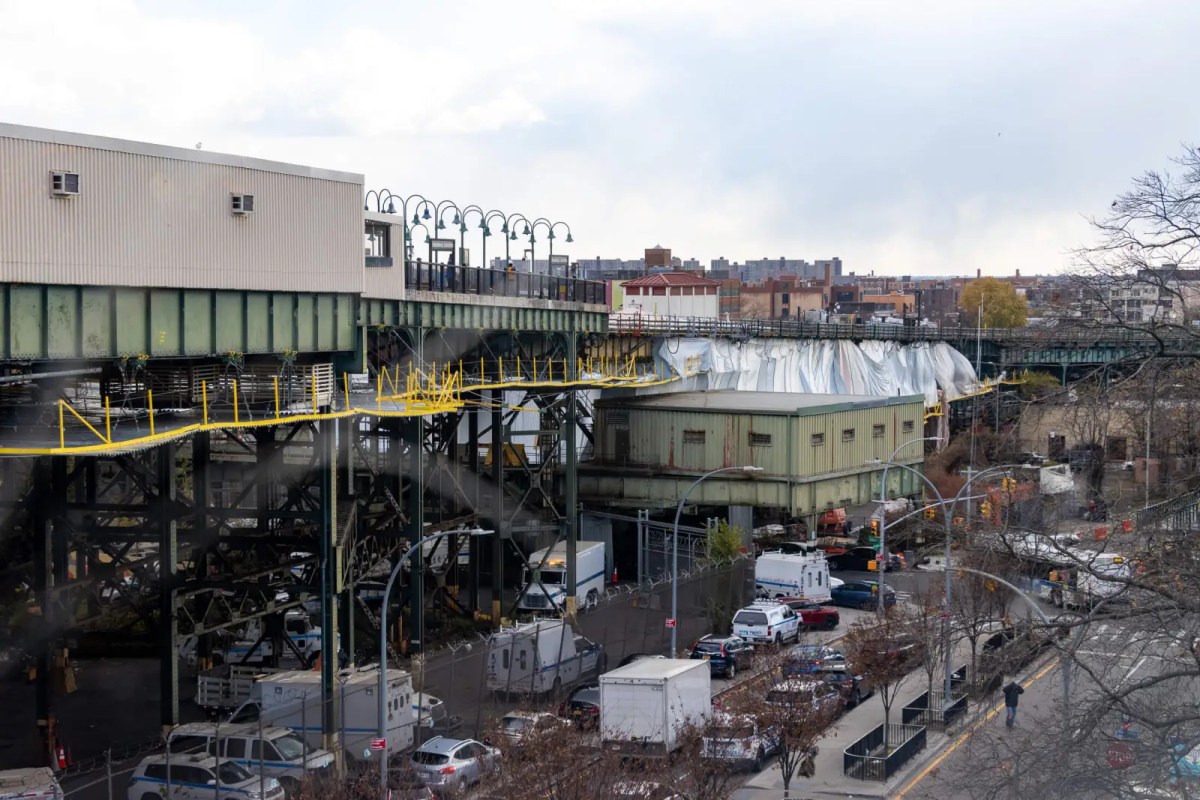
In regards to the Sackman Street and Williams Avenue sites, Santos said the group, which has done community-visioning work for the Sackman Street site, wants to see the innovative green industry thrive there and have small businesses supported with affordable lease options. In the outreach the group did for the Sackman Street site, locals expressed the desire for food processing, storage, and distribution businesses; workforce development; a hydroponic community garden; and events space, he said.
The group likewise supports innovative multipurpose use at the Williams Avenue site, with Santos saying he hopes multiple small businesses could be supported in an incubator-type setting. Both sites should be offered as ground leases, and ownership should stay with the city or a community land trust to ensure long-term affordability, he said.
The city has also completed a $9 million renovation of a 30,000-square-foot industrial building at 171-201 Powell St. in the IBZ and secured leases for two small minority—and women-owned businesses: Lambo Mechanical and Centsible House.
According to EDC, the two firms are expected to create more than 30 jobs within the next six years. Additionally, the EDC worked with the Department of Citywide Administrative Services to license a long-vacant 3,500-square-foot lot to Sure We Can, a woman-run nonprofit focused on bottle and can recycling. The lot will serve as a green community space and recycling hub, the agency said.
As part of the city’s broader workforce development initiatives in the neighborhood, the EDC also plans to install an operator to manage a new workforce development fund focused on East Brooklyn that will connect local job seekers with employment opportunities, according to the agency.
This article first appeared on Feb. 13, 2025, on our sister site Brownstoner.
Read More: https://www.amny.com/new-york/brooklyn/





